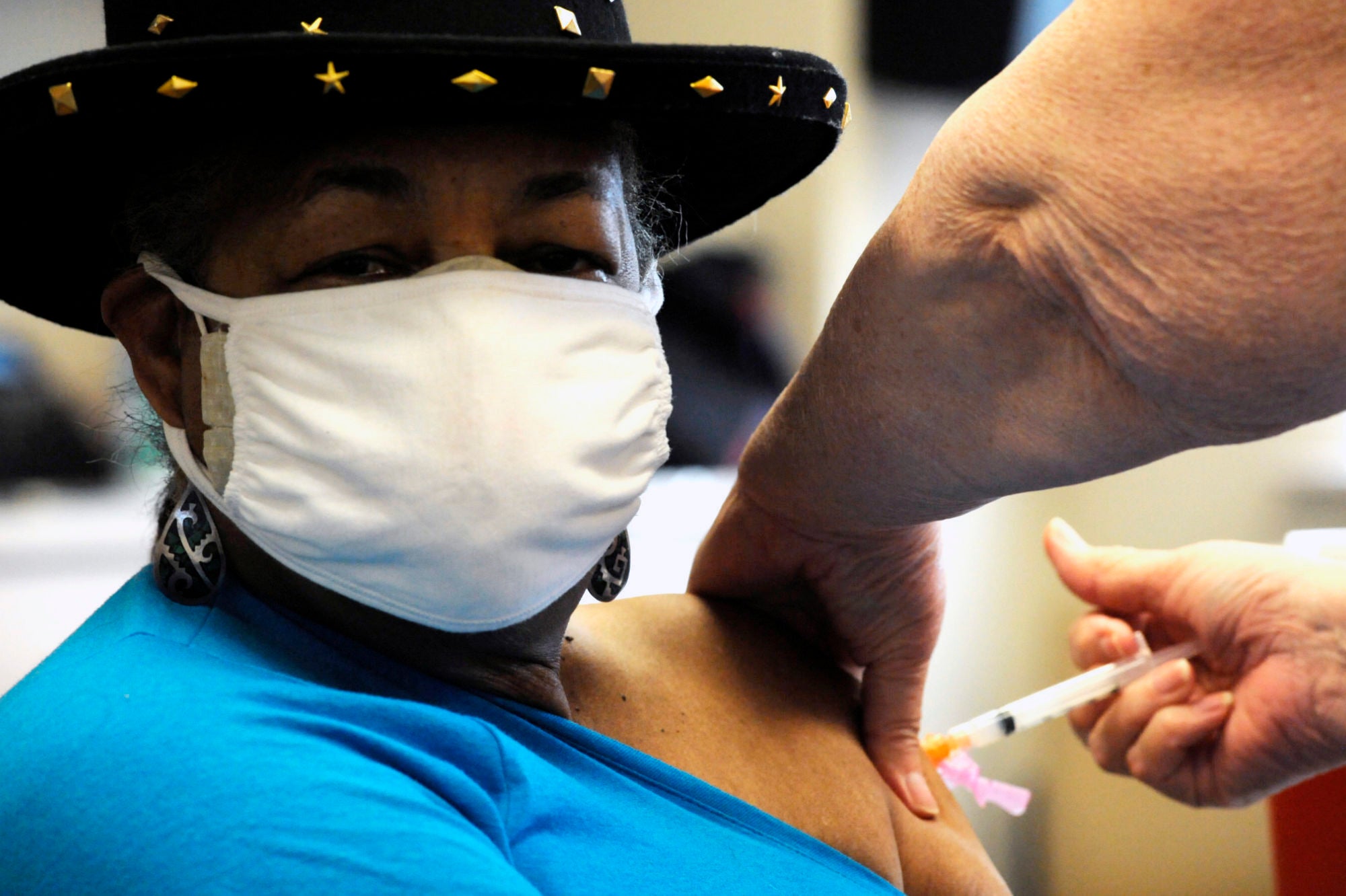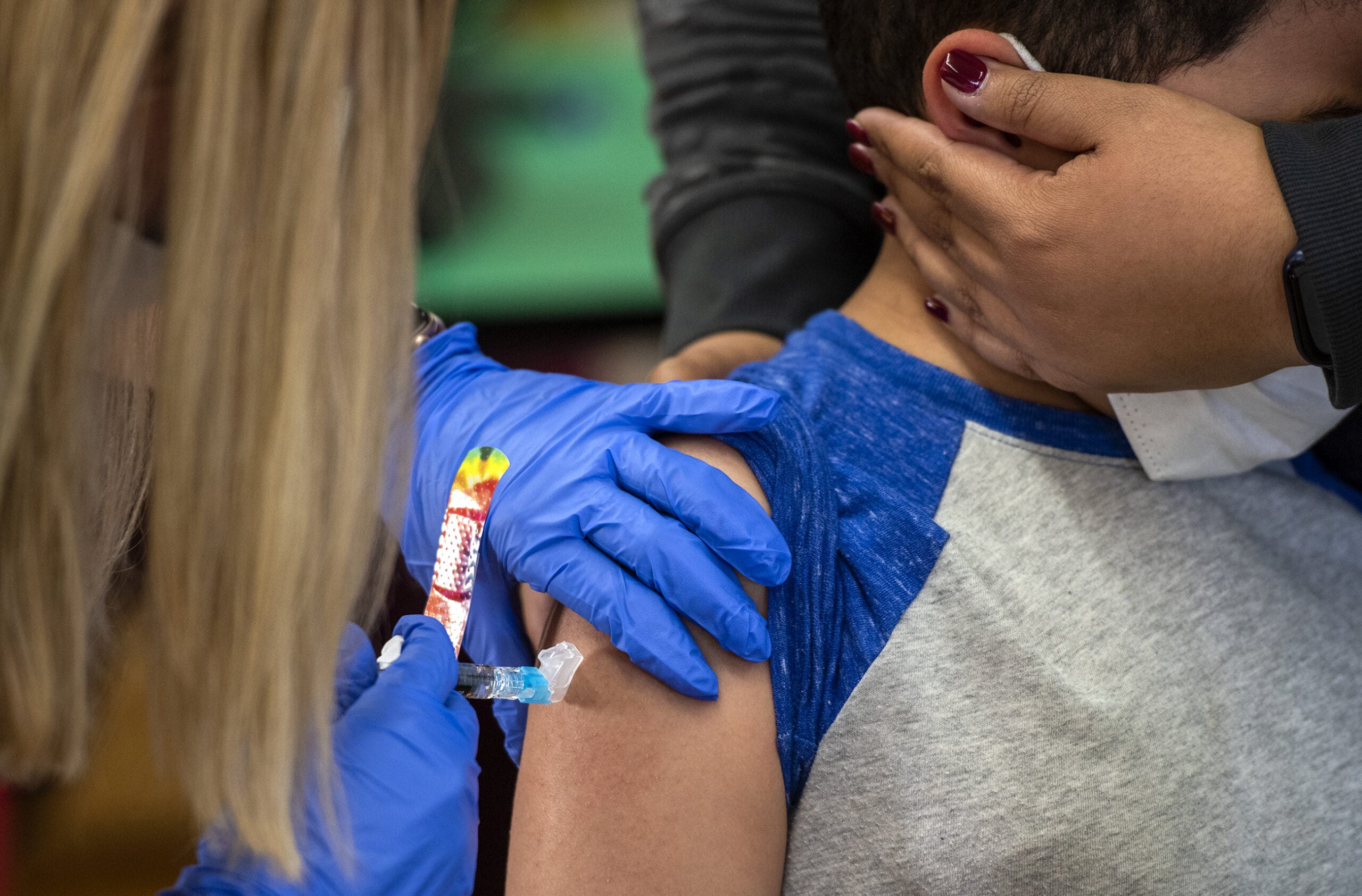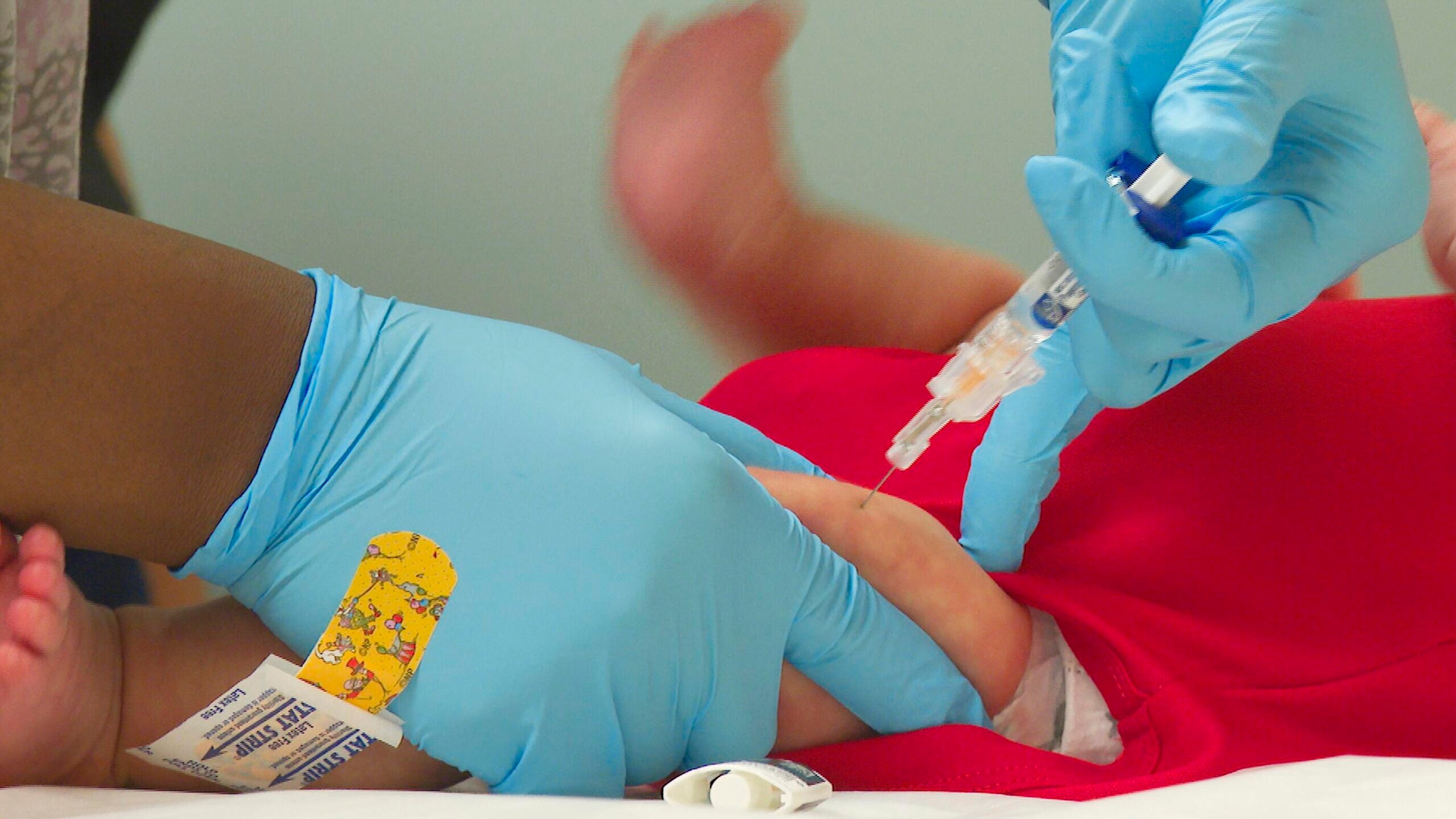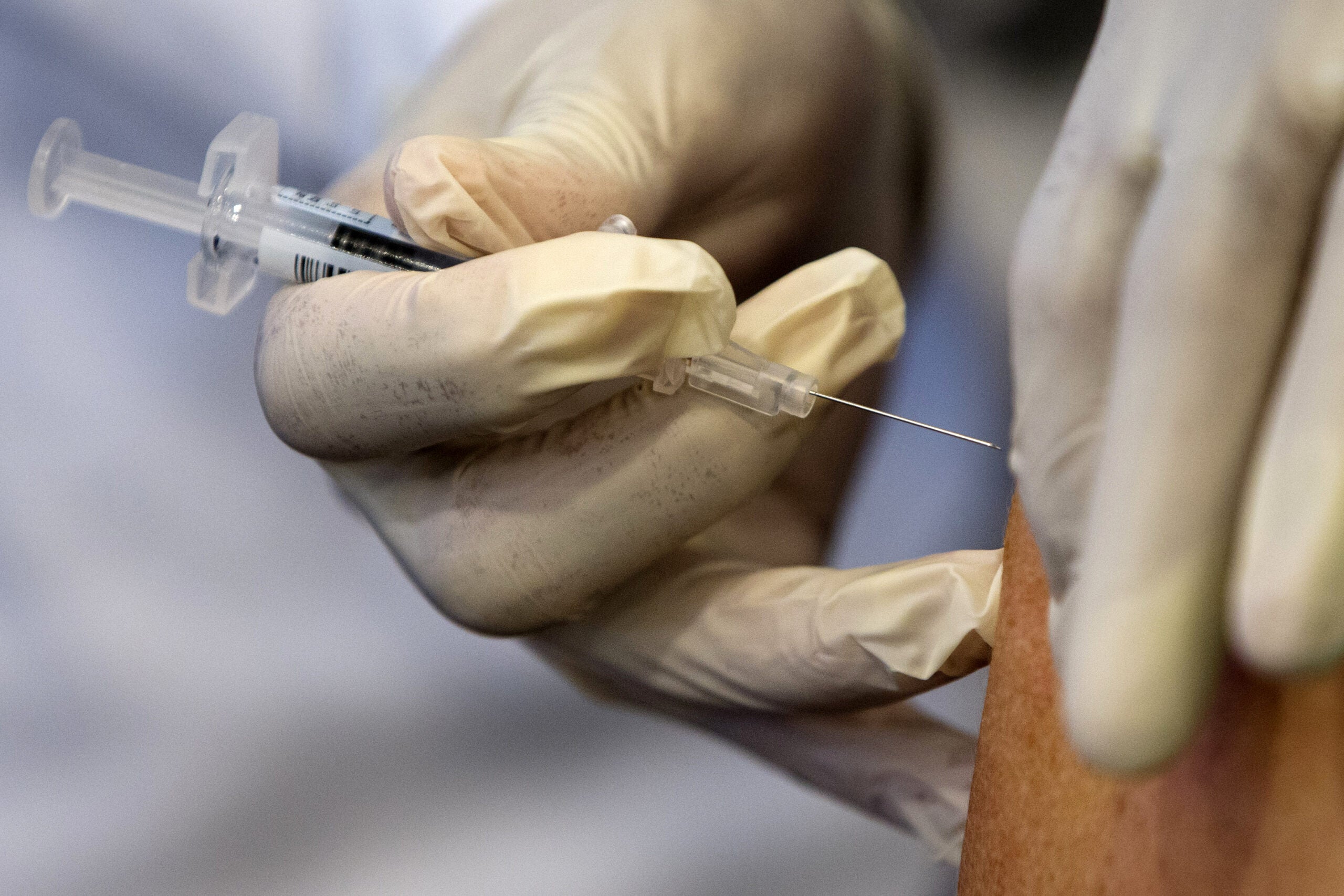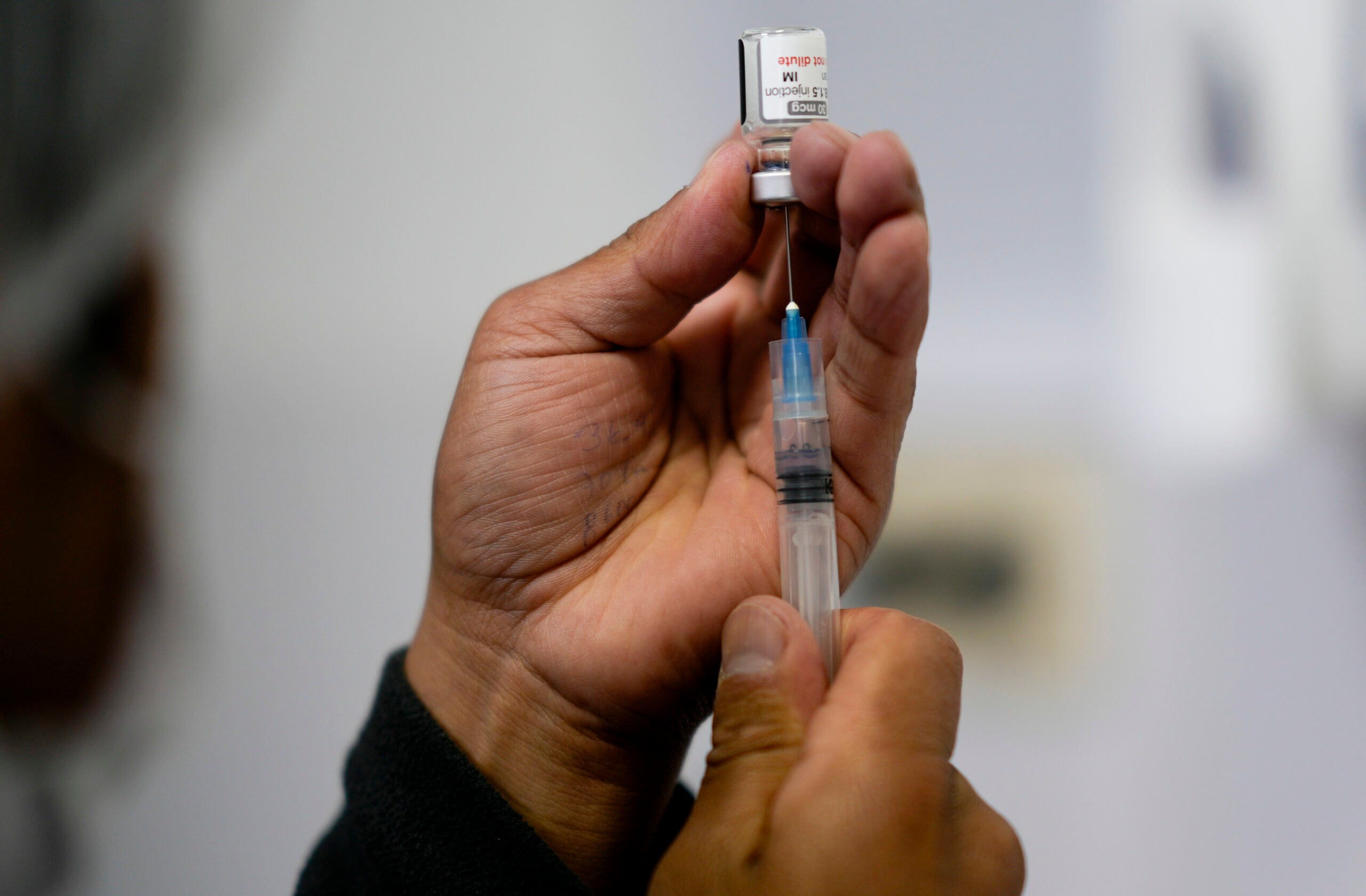New reports of COVID-19 cases have continued to decline since an early January surge in Wisconsin, based on the latest data published by the state Department of Health Services.
DHS reported 1,095 new cases of the disease Tuesday, bringing the average for the past seven days to 1,291 daily cases. One week ago, the average was 1,545 daily cases.
There were 40 new deaths from COVID-19 reported Tuesday. It comes after a temporary dip with three deaths reported Sunday and one Monday. On Tuesday, 2,087 people tested negative.
News with a little more humanity
WPR’s “Wisconsin Today” newsletter keeps you connected to the state you love without feeling overwhelmed. No paywall. No agenda. No corporate filter.
Of the people tested for COVID-19 over the past week, 19.7 percent were positive for the disease, according to DHS. That rate has been on the decline since early January, when the seven-day average peaked at 32.3 percent.
The positivity rate is often read by public health officials as a measure of overall testing levels. A high rate could indicate that testing in the state is limited, and skewed toward those already flagged as potentially having COVID-19. A lower rate could indicate testing is more widespread. Changes in the test positivity rate can also speak to COVID-19’s spread, if the size and makeup of the testing pool stays consistent.
DHS also tracks the percentage of tests that are positive, instead of the percentage of people who get a positive result. The metric takes into account people who have been tested multiple times. The seven-day average for that number is 5.1 percent.
As of Tuesday, 578,335 doses of vaccine have been administered, and 107,860 people have received both shots, completing the vaccination series.
Last week, Wisconsin vaccinators requested nearly 300,000 doses of vaccine, according to DHS Deputy Secretary Julie Willems Van Dijk. The state was able to fulfill 27 percent of those orders, using a formula to determine where its limited amount of vaccine goes each week, she said.
“This week we made some changes to ensure that we were equitably distributing the vaccine across our state,” she said.
The long-term care program, which is working to vaccinate residents and staff members at nursing homes and assisted living facilities, Federally Qualified Health Centers and tribal clinics received their full supply, Willems Van Dijk said.
Some Wisconsin Walgreens will receive direct-to-pharmacy shipments of vaccine next week, Willems Van Dijk confirmed. It’s part of a plan announced Tuesday by the Biden administration to expedite the vaccine’s rollout across the country.
The coronavirus pandemic has disproportionately impacted minority communities. On Tuesday, DHS officials said the agency has plans to begin releasing data showing the racial and ethnic breakdown of vaccine distribution.
“Much of our demographic data to date has been largely reflective of our first population, group 1a, which was largely health care workers and residents of long-term care facilities,” Willems Van Dijk said. “So now as we move into a much broader population, people over age 65, our demographic breakdowns by age, by gender, by race and ethnicity will start to be a bit more representative of the population as a whole.”
According to the Wisconsin Hospital Association, there were 686 COVID-19 patients hospitalized as of Monday. A total of 24,460 people have been hospitalized because of the disease, or 4.5 percent of all positive cases. That includes more than 100 new hospitalizations Tuesday.
The latest figures bring the overall total of positive cases in Wisconsin to 544,260, according to DHS. A total of 5,937 people in Wisconsin have died from COVID-19.
COVID-19 activity varies from county to county. The latest activity data from DHS, released Wednesday, showed the state had moved to having no counties with a “critically high” level of COVID-19 activity. Forty-seven counties were listed as having a “very high” level of activity and 25 counties had a “high” level of activity. The number of Wisconsin counties at a “critically high” and “very high” level of COVID-19 activity has been decreasing. Wisconsin’s overall level is “very high.”
COVID-19 activity designations are based on the number of new cases per a county’s population over a 14-day period, as well as whether there’s an upward or downward trend in new cases.
As of Wednesday, all seven of Wisconsin’s regions had “very high” levels of activity and were seeing “shrinking” levels or “no significant change” of COVID-19 activity, according to DHS.
Wisconsin’s daily testing capacity — based on the availability of test supplies and adequate staffing — has grown from 120 available lab tests in early March to 59,273 as of Tuesday. The number of actual people with new test results reported Tuesday was 11,374.
A total of 3,057,017 people have been tested over the course of the pandemic. Of those, 2,512,757 have tested negative.
___________________________
Wisconsin Public Radio, © Copyright 2025, Board of Regents of the University of Wisconsin System and Wisconsin Educational Communications Board.

